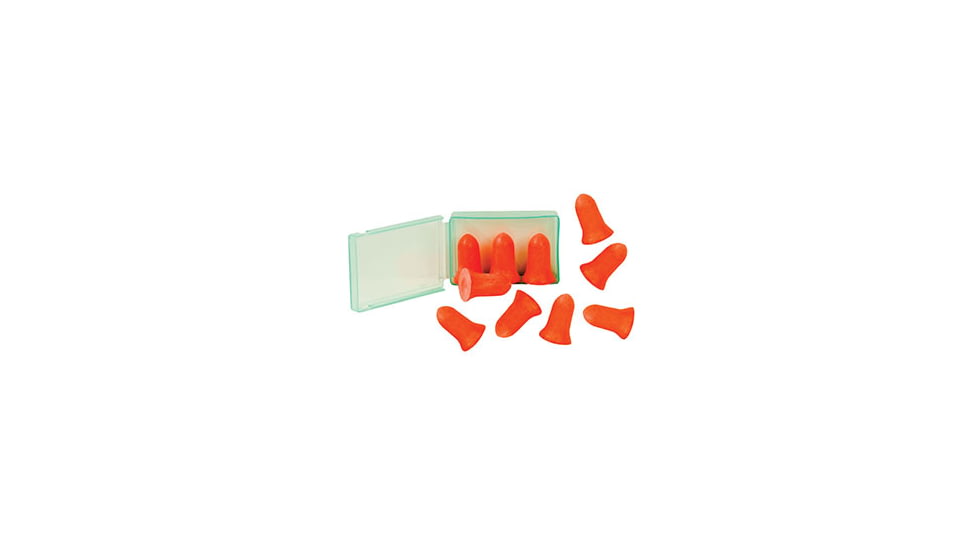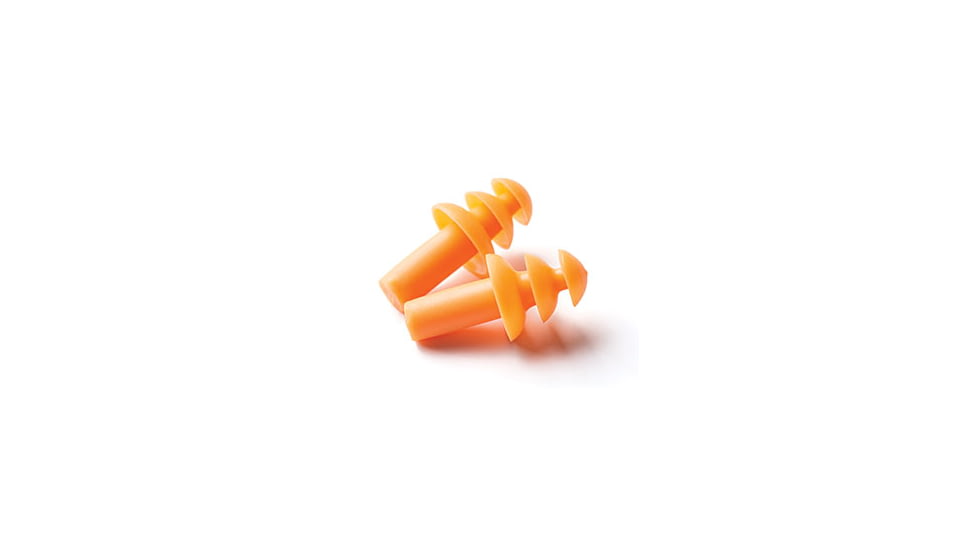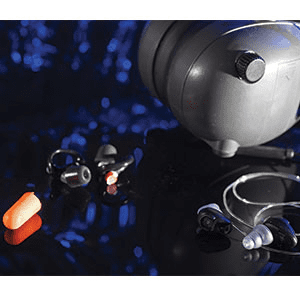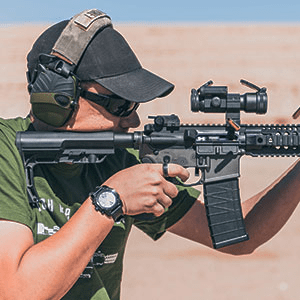I’ll admit it — I’m a poster child for why you should take this subject seriously. As a teenager who plinked around our rural home on a nearly daily basis, I didn’t see any need for hearing protection since "they’re just 22s." When shooting larger calibers, I’d intermittently wear or ignore them based on my adolescent whims. When I was out hunting every year, I never used any shooting ear protection out of fear of not being able to hear animals moving through the trees and brush. Blasting music at full volume didn’t help either, but it wasn’t the main culprit. As the decades wore on into my 30's and I started noticing pain from loud noises and longer recovery times for my hearing to come back, I began taking more care to use different types of ear protection.
Stupidly, I still didn’t use anything when I went hunting, until about 10 years ago when my partner took a shot at a deer with his .243, and the muzzle was exactly perpendicular to my left ear. The pain was like an icepick into my ear canal, and the high whine of tinnitus set in immediately. Aside from the ringing, that ear felt like it was full of water, and only muffled sounds came through for over a month. Slowly, some of my hearing came back, but on a good day, it’s maybe half of what it used to be. The tinnitus is always there, varying in intensity but never gone.
"Sorry, what’d you say?" has become my catchphrase, and I tilt my head at anyone who’s talking to me since my right ear’s better (but it ain’t all that great, either). This was all entirely preventable, and there’s nothing to blame but my own hubris. I’d like others to learn from my mistakes so they don’t have to repeat them, even though they’ll find themselves repeating what they’re saying quite a bit when we shoot the breeze.
In this article, you’ll learn more about the best ear protection for shooting and how inexpensive and easy it is to take one simple step to protect yourself from life-long consequences. Once your hearing’s gone, in most cases, it’s gone for good.
And that wildlife I was so worried I wouldn’t hear if I wore ear protection? I’ve certainly solved that problem, yeah-buddy. Even with sound-amplifying ear protection, I rely heavily on my eyesight out in the woods.
At What Point Is Hearing Protection Required?
Anyone in the vicinity of gunfire needs hearing protection, so ear plugs and/or ear muffs are some of the most essential pieces of safety gear that you can have when you’re going shooting. Shooting ear protection (often called "ear pro") is necessary for everyone on the range, including shooters and bystanders. This is also true for hunters in the field. Today, many types of hearing protection devices are available on the market that won’t hamper hearing game and maintaining situational awareness.
Any noise over 85 decibels (dB) can cause permanent hearing loss, which can be compounded by other factors like shooting indoors. Guess what? A .22 Long Rifle, one of the smallest calibers used for hunting and recreational shooting, produces at least 140 dB using standard loads. Ear damage can occur in as little as one shot, and the effects are cumulative over time with repeated noise exposure.
Sound that can be heard by humans is measured in decibels, which start at 0 and go up exponentially with each unit of measurement and are abbreviated as "dB." As I mentioned, 85 dB is the top threshold of safe noise levels. What’s that in real-world terms?
- A busy city street or lawnmower is about 85dB
- A car horn is roughly 110dB
- A chainsaw buzzes around 120dB
- Rock bands are notorious for loud concerts, averaging 115dB
- The Beatles hit 130dB in 1965, and that’s the threshold of pain for noise exposure.
- The confirmed loudest concert so far was 143.2dB in 2008 by Sleazy Joe. Scientifically speaking, that’s a whole lot of shakin’ going on.
Again, even a small-caliber .22LR is around 140dB, so it’s always important to have ear pro when you’re around gunfire. NRR is the Noise Reduction Rating of hearing protection, normally ranging from 21 to 33. For shooting, you’re going to want a bare minimum of 25 NRR, but the more the better. Remember, since dB’s increase exponentially, so does the NRR. A difference of even one decibel or NRR can be the difference between safety and hearing loss. The best shooting ear protection is what you’ll use consistently and without hesitation, so it should be comfortable and suit your needs. Here’s an overview of the most common types of hearing protection with some pros and cons.
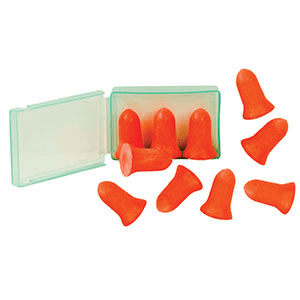 Ear Plugs: Pros and Cons
Ear Plugs: Pros and Cons
Ear plugs are pretty self-explanatory. They’re devices placed into the ear canal to block noise. They’re the simplest types of ear protection devices and usually the least expensive. You’ve probably seen “foamies,” the little brightly colored foam earplugs that come in bulk packs. They’re designed to be twisted and placed into the ear, where they expand to block the ear canal. Some come with a small tether cord between them to make them easily accessible when not in use.
Pros of Ear Plugs:
- Very economical, usually less than a dollar a pair
- Small and easily tucked into a container about half the size of a ping pong ball
- More comfortable for longer periods of time, particularly in the heat
- Mold to the inner ear, making them a nearly universal fit when used properly
- Do not interfere with wearing glasses, hats, helmets, etc.
- Can be worn under ear muffs to "double up" protection
Cons of Ear Plugs:
- Short lifespan, get dirty fast
- Some users may have difficulty inserting and removing them
- If improperly fitted, NRR is reduced
- Any dust or dirt accumulated during handling will be introduced to the ear, not ideal for setting down or pocket carry
- May cause irritation in the ear canal
To increase the pros and reduce the cons, there are advanced shooting earplugs that are more durable, washable, and fitted. These tend to cost more but are well worth it if you’re a frequent shooter. Some are rubberized, and others will allow normal ambient sound to transfer through but have valves that close automatically when noise levels increase. There are even models that are Bluetooth compatible or corded that allow you to listen to music while providing hearing protection from outside noises. However, if you’ve got Sleazy Joe cranked up to 11, it may be a wash. Invest a little money and buy a few different kinds to find the best earplugs for you.
Ear Muffs: Pros and Cons
Again, pretty self-explanatory. These are the same form as the ear muffs worn in the winter but are designed to provide hearing protection. Shooting ear muffs provide a better NRR because they enclose the entire ear, and the spring tension of the connecting headband holds them tightly to the head. Electronic ear muffs add to that, using technology that automatically detects when noise reaches about 85dB and switches off the mic. They’re useful for maintaining situational awareness and being able to hear range commands or wild game. They're also available with Bluetooth or a headset jack, if that’s what you’re looking for.
Pros:
- Superior NRR protection
- Can be set down without worrying about dust and debris
- Stay firmly in place
- Not easy to lose
- Can be worn even if ears are irritated or you have an ear infection
- Fits most head sizes
- Can be worn over earplugs to "double up" protection
Cons:
- Can be uncomfortable in hot weather
- Can lose NRR if ear bows of glasses are between the muffs and the head
- Can interfere with helmets, hats, etc.
- Increased cost
- Bulky, carrying and storage require more space
What is the Best Form of Ear Protection for Shooting?
Overall, the best form of ear protection is ear plugs, particularly when used in combination with ear muffs. Ear plugs completely close off the ear canal, which is why they are the best hearing protection overall.
All Right, Listen Up
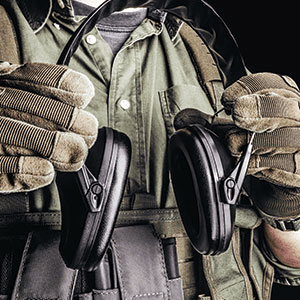 So there you have it, ways you can easily protect yourself from hearing loss while you’re enjoying shooting sports (or going to rock concerts). Nobody is too tough to forgo ear protection and sacrifice one of their five senses, period. Don’t wind up asking everyone to speak up and repeat themselves all the time, take it from me.
So there you have it, ways you can easily protect yourself from hearing loss while you’re enjoying shooting sports (or going to rock concerts). Nobody is too tough to forgo ear protection and sacrifice one of their five senses, period. Don’t wind up asking everyone to speak up and repeat themselves all the time, take it from me.
Oh, and one last thing: suppressors don’t actually "silence" guns, and caution should be taken when using one to ensure that you are still using some form of hearing protection for your own safety. If you want to learn more, read more of our Hearing Protection Guides for tips on ear protection for the shooting range.














